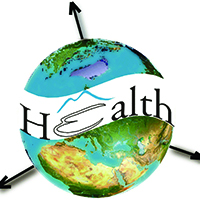Modelling count data with an excess of zero values applied to childhood bone tumour incidence in Iraq

Accepted: 18 October 2020
HTML: 112
All claims expressed in this article are solely those of the authors and do not necessarily represent those of their affiliated organizations, or those of the publisher, the editors and the reviewers. Any product that may be evaluated in this article or claim that may be made by its manufacturer is not guaranteed or endorsed by the publisher.
Authors
Bone tumours are rarely found in children and adolescents (0- 19 years old), but there are reports from some provinces in Iraq indicating possible increases in the incidence of childhood bone cancer. Since counts are very low and often zero, or near zero, we fitted zero-inflated Poisson, zero-inflated negative binomial, Poisson hurdle, and negative binomial hurdle regression models to investigate these changes. We used data covering the 2000-2015 period taking age, gender and province into account with the aim of identifying potential health disparities. The results indicate that the zero-inflated Poisson is the most appropriate approach. We also found that, the incidence rate ratio of bone tumours for age groups of 5-9, 10-14 and 15-19 years were 134%, 490% and 723% higher, respectively, compared to the 0-4 year olds. The incidence rate was higher by 49% higher in males compared to females. Compared to 2000-2004, the rate was higher during 2005-2009 and 2010-2015 by 23% and 50%, respectively. In addition, the provinces Al-Muthana and Al-Diwaniyah in the South were found to have a higher incidence rate than other provinces. Join point analysis showed that the age-adjusted incidence rate had a significant, increasing trend, with an average percentage change of 3.1% during 2000-2015. The study suggests that further research into childhood tumours, bone tumours in particular, is needed. Reference to the effect of environmental factors in this group of medical disorders would be of special interest.
How to Cite
PAGEPress has chosen to apply the Creative Commons Attribution NonCommercial 4.0 International License (CC BY-NC 4.0) to all manuscripts to be published.

 https://doi.org/10.4081/gh.2021.873
https://doi.org/10.4081/gh.2021.873




